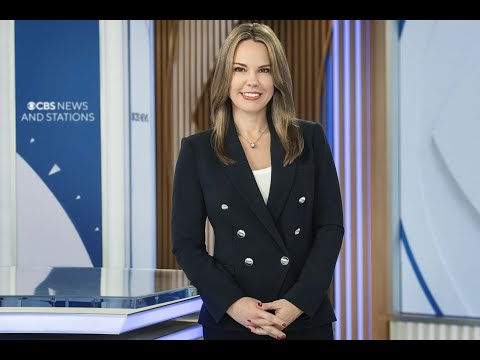Navigating Leadership Transitions: An In-Depth Look at the Wendy McMahon Situation at CBS News
This article delves into the complexities surrounding leadership changes, using the example of Wendy McMahon’s departure from CBS News. By exploring the multifaceted aspects of such shakeups, we aim to provide a comprehensive understanding of the ripple effects within news organizations and the broader implications for the industry. We’ll examine the factors contributing to these transitions and the importance of adapting to evolving landscapes.
Understanding the Nuances of Leadership Shakeups
Dissecting a leadership shakeup, like the one involving Wendy McMahon, requires moving beyond simplistic explanations. Often, the reality is far more intricate than casual observers perceive. A thorough analysis reveals underlying complexities that significantly impact the organization. It’s crucial to debunk common misconceptions and appreciate the depth involved in such transitions.
[IMAGE: https://i.ytimg.com/vi/5fv4F5QUxqE/hqdefault.jpg Alt Text: CBS News CEO Wendy McMahon Resigns Amid Leadership Shakeup]
The Importance of Historical Context
Gaining a deeper understanding of leadership changes often involves examining their historical context. Understanding the origins and evolution of news organizations and leadership roles can provide valuable insights into the present situation. Milestones, influential figures, and pivotal moments can shape the current landscape and influence future trajectories. This historical perspective adds a richer, more nuanced understanding of the events.
The Interplay Between Leadership and News
The relationship between leadership and news is synergistic and interdependent. Advances in news can drive innovation and development in leadership strategies, and conversely, effective leadership can unlock new potential for news organizations. This positive feedback loop highlights the interconnected nature of these elements and the importance of their alignment for success.
The Real-World Significance of Leadership in News
The practical significance of leadership within news organizations like CBS is pivotal. Strong leadership is essential for navigating challenges and adapting to dynamic environments. Effective leaders can translate theoretical concepts into practical solutions, ensuring the organization remains competitive and relevant in today’s fast-paced world.
Adapting to Future Trends in News Leadership
Looking ahead, leadership roles in news are likely to evolve by incorporating emerging technologies like AI and machine learning. Forward-thinking leaders will embrace these advancements to enhance news gathering, production, and distribution. This adaptability will be crucial for navigating the future of news and staying ahead of the curve.
[IMAGE: https://i.ytimg.com/vi/k8DOTUs9XHg/hqdefault.jpg Alt Text: CBS News CEO Wendy McMahon Resigns Amid Turmoil and Major Merger Plans]
A Structured Approach to Understanding Transitions
Comprehending leadership transitions, like the one involving Wendy McMahon, requires a structured approach. This involves preliminary research, meticulous data gathering, rigorous analysis, strategic planning, and hypothesis formulation. Iterative implementation, continuous monitoring, and adaptive feedback loops are also essential for achieving successful outcomes.
The Impact of Plans and Ethical Considerations
Exploring the impact of plans on news adds another layer of understanding to leadership transitions. Discussions on ethical considerations that arise with new applications and the socio-economic shifts driven by their adoption are crucial. Recognizing these interconnected ideas and their broader effects provides a more holistic view of the situation.
[IMAGE: Conceptual illustration of ethical considerations during a leadership transition in news. Alt Text: Balancing innovation and ethics in news leadership.]
Case Study: Enhancing Resigns Capabilities
Consider a project where news is meticulously applied to a large-scale initiative focusing on enhancing resigns capabilities. Examining the outcomes, hurdles encountered, lessons learned, and best practices can provide valuable takeaways for similar endeavors. This case study approach offers a concrete example of the challenges and opportunities involved in leadership transitions.
Frequently Asked Questions (FAQ)
Q: What are the common misconceptions about leadership shakeups in news?
A: Many people underestimate the depth and complexity of leadership transitions. A thorough analysis reveals underlying factors and nuances that are often overlooked by casual observers.
Q: How does historical context contribute to understanding leadership changes?
A: Understanding the origins and evolution of news organizations and leadership roles provides valuable insights into the present situation. It helps to contextualize current events and understand the factors that have shaped the current landscape.
Q: What is the relationship between leadership and news organizations?
A: Leadership and news organizations have a synergistic and interdependent relationship. Advances in news can drive innovation in leadership strategies, and effective leadership can unlock new potential for news organizations.
Q: Why is adaptability crucial for future news leaders?
A: The future of news is likely to involve emerging technologies like AI and machine learning. Leaders who embrace these advancements and adapt their strategies accordingly will be best positioned to succeed.
Conclusion: Synthesizing Knowledge on Leadership Transitions
The departure of Wendy McMahon from CBS News serves as a case study for the complexities and nuances inherent in leadership transitions within the news industry. As we’ve explored, such shakeups are not isolated events but rather interconnected components of a broader, evolving landscape. Understanding the historical context, embracing future trends, and maintaining ethical considerations are paramount for navigating these transitions effectively. The critical nature of continuous evolution and adaptation in leadership strongly emphasizes the ongoing importance of lifelong learning, critical thinking, and interdisciplinary collaboration in this dynamic field, ultimately shaping the future of news and its leadership.






